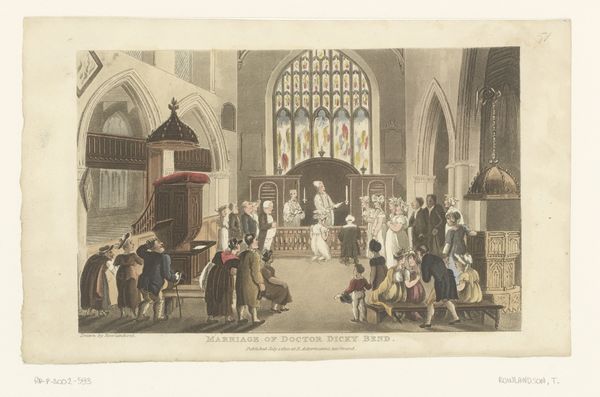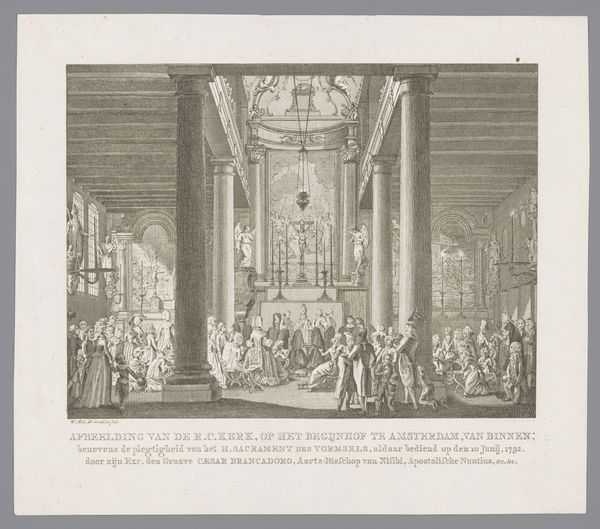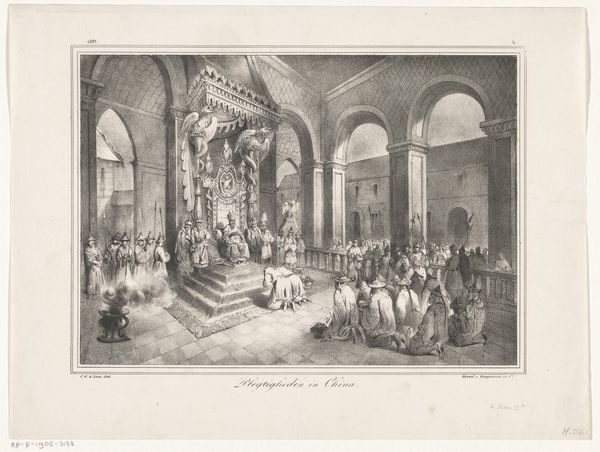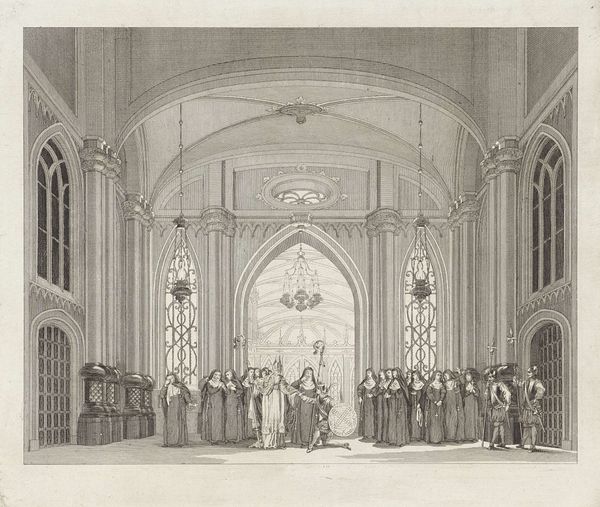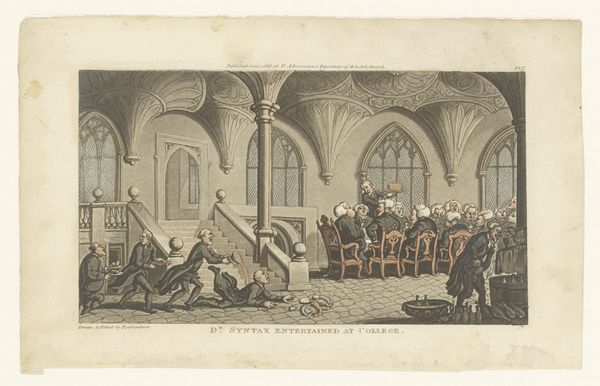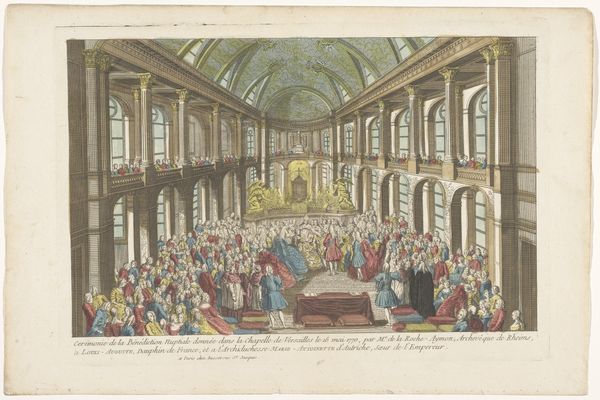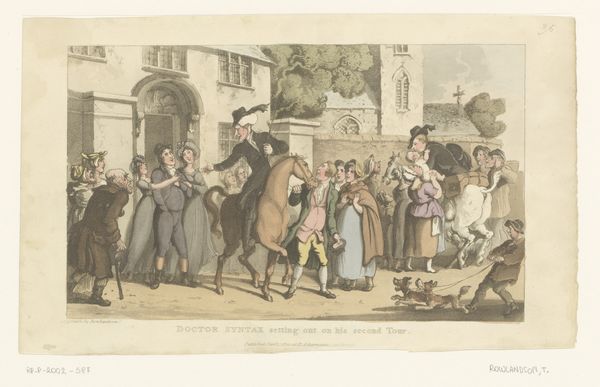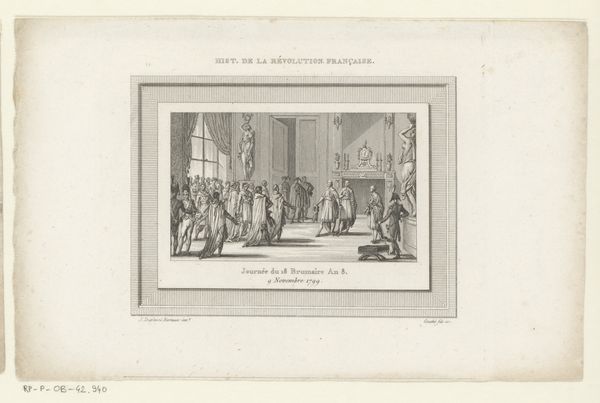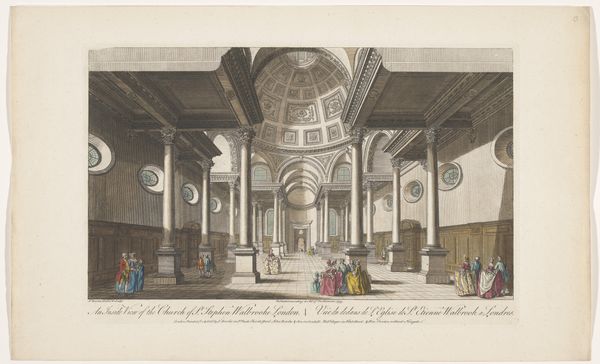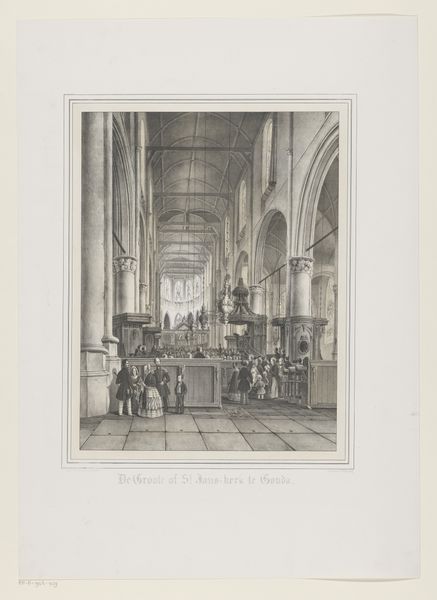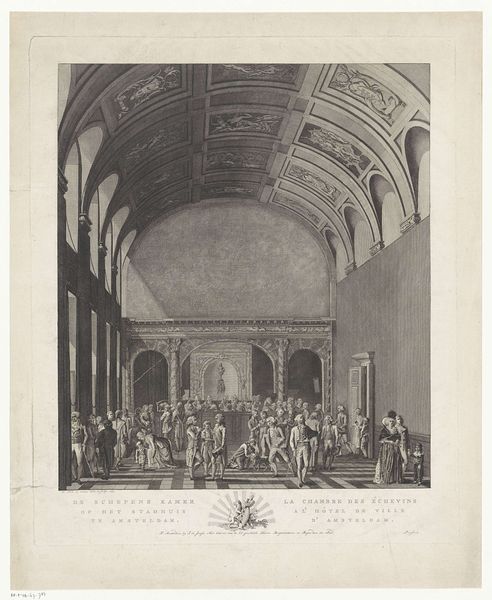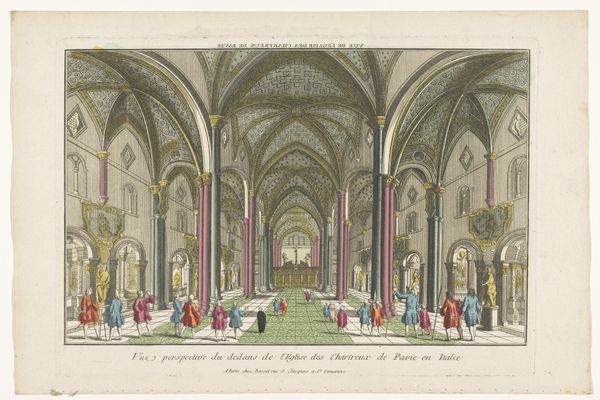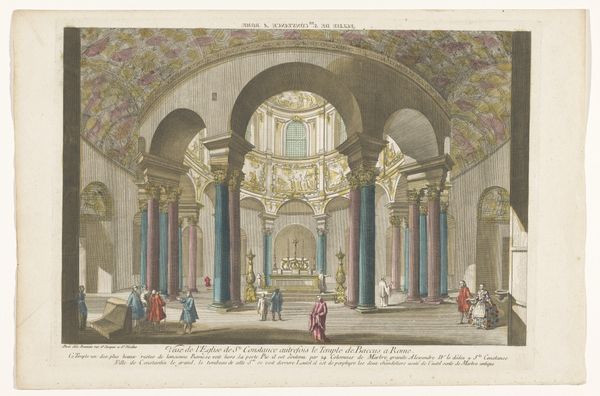
Dimensions: 4 5/8 x 7 5/8 in. (11.75 x 19.37 cm) (sheet)
Copyright: Public Domain
Thomas Rowlandson created this print, "Doctor Syntax Preaching," in 1815. It depicts a scene within a church, dominated by the figure of Doctor Syntax in the pulpit. The raised pulpit itself, a stage for moral pronouncements, echoes the classical Greek bema, symbolizing authority and a space for rhetoric. This motif reappears throughout history, from Roman orators to modern political platforms. Yet, here, it's subverted; the congregation appears more disengaged than devout. Notice the man asleep in the pew. It is a satirical comment on religious authority, echoing similar critiques found in earlier Dutch genre paintings. This act of sleeping, of ignoring the sermon, becomes a powerful symbol of resistance against imposed doctrines. It taps into a collective unease, a subconscious rejection of dogma. The image engages us by showing the gap between the ideal and the real, between the authority claimed and the attention given. The symbol of inattention resurfaces in many forms, reflecting a cyclical questioning of authority. It evolves, adapts, but always carries a kernel of dissent, reminding us that the power of symbols lies not just in their creation, but in their reception and reinterpretation.
Comments
minneapolisinstituteofart almost 2 years ago
⋮
Rowlandson's Doctor Syntax The Tours of Doctor Syntax was an immensely successful series; Rowlandson produced the pictures, which were made into a story by the author William Coombe, who wrote poems to accompany them. Three satirical books were published (1809-21) that follow the hilarious misadventures of a foolish clergyman and schoolmaster, Dr. Syntax, a kind of English Don Quixote. The absurdity of Syntax's character and mishaps incisively mock the customs of the day. Rowlandson devoted most of his time to magazine and book illustration in the second-half of his career, working primarily for the enterprising publisher, Rudolph Ackermann (1764-1834), who printed the Doctor Syntax series. Rowlandson's later activities mark a gradual shift in the caricature genre, when publishers and artists moved away from the production of single, high-quality, expensive prints to the cheaper comical cartoons that were featured in widely distributed magazines. Weeklies like Punch and the Illuminated Magazine were founded in the 1840s and would become a staple of Victorian England. Caricature in this new era served more frequently as illustrated journalism, with cartoons representing an editorial point-of-view, often produced by professional illustrators hired by magazines.
Join the conversation
Join millions of artists and users on Artera today and experience the ultimate creative platform.
